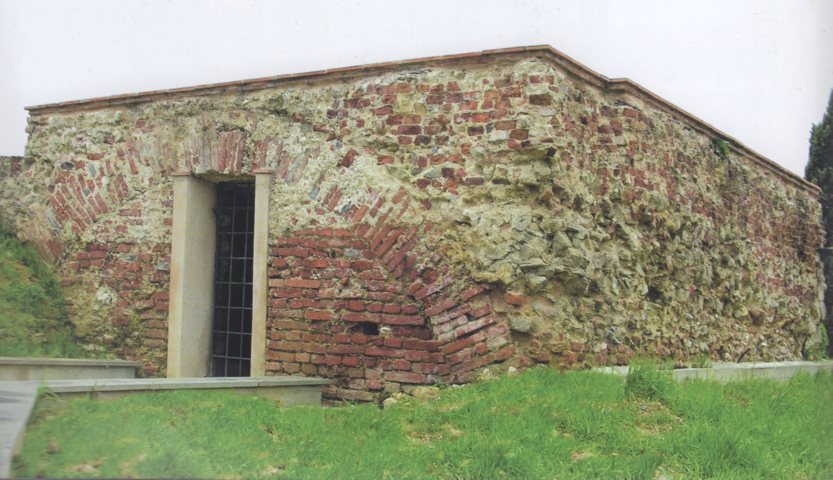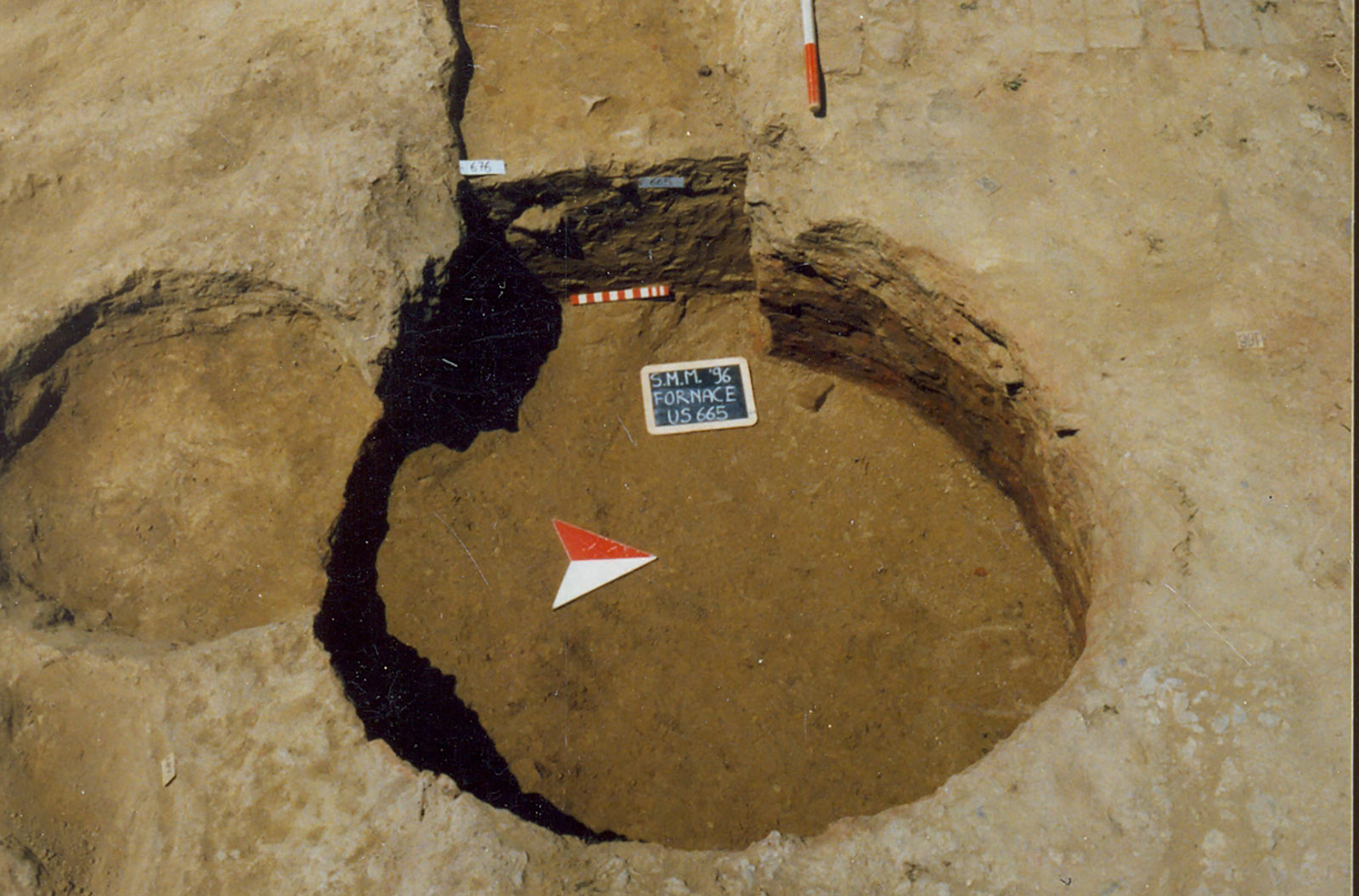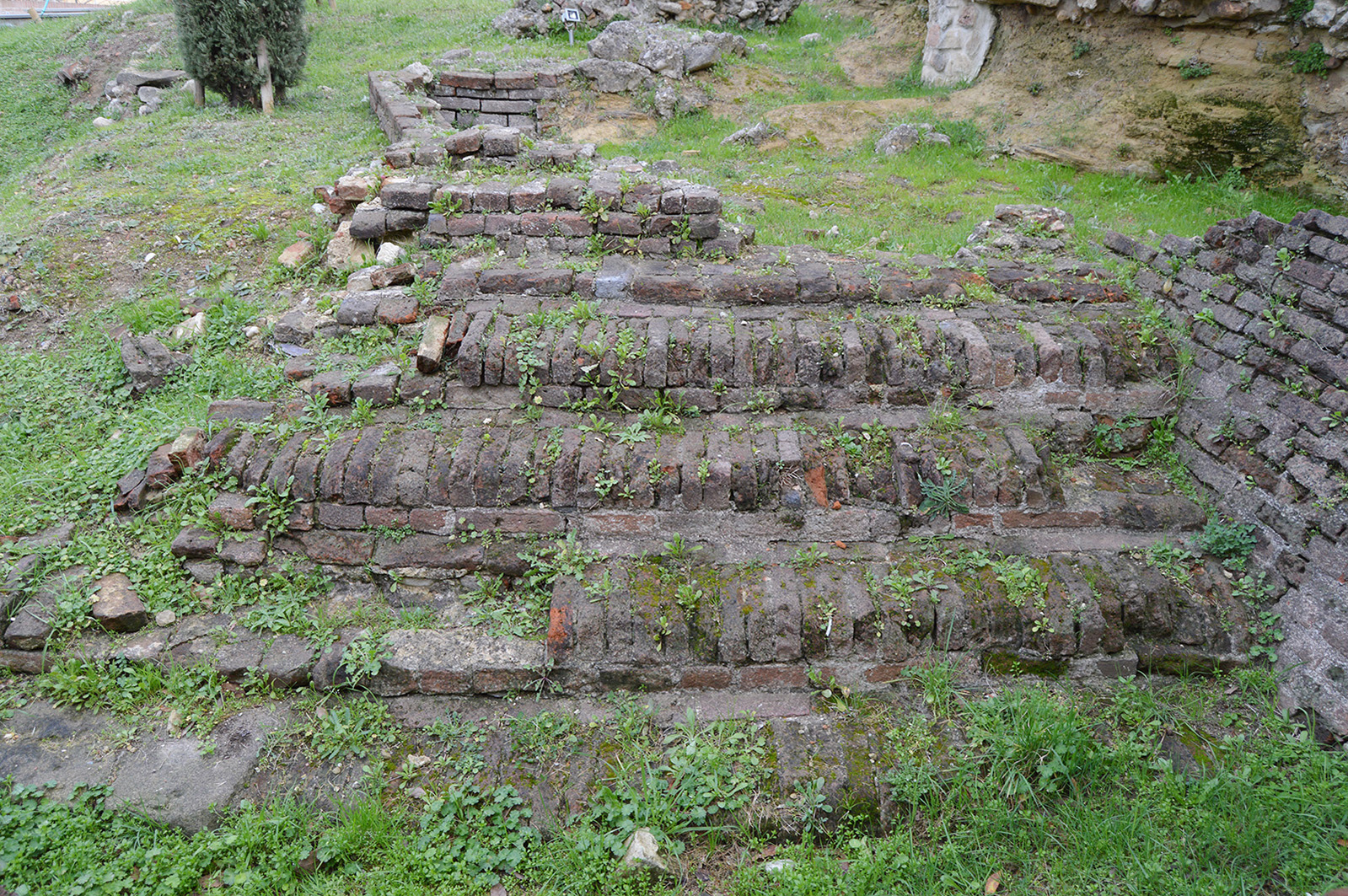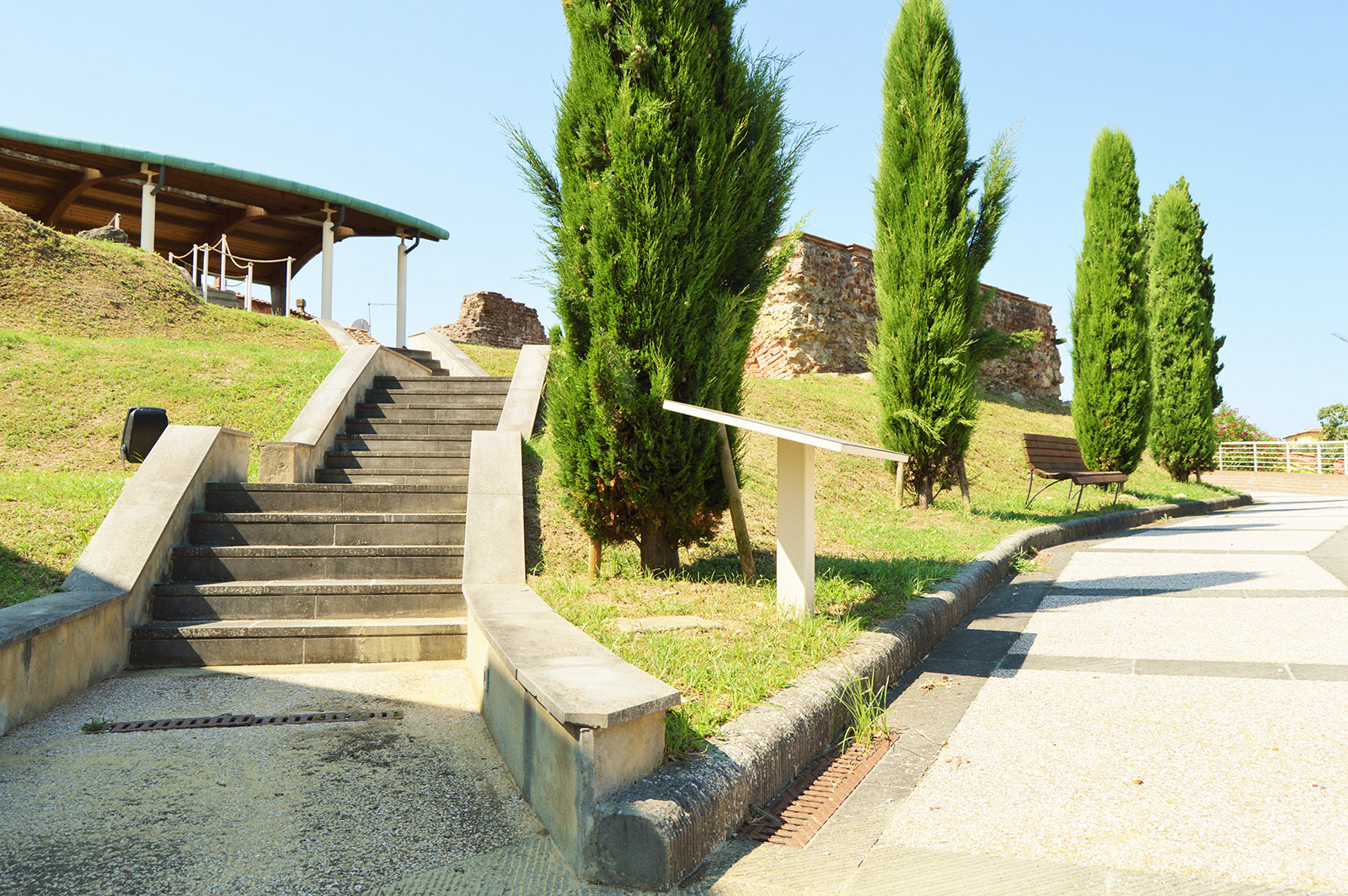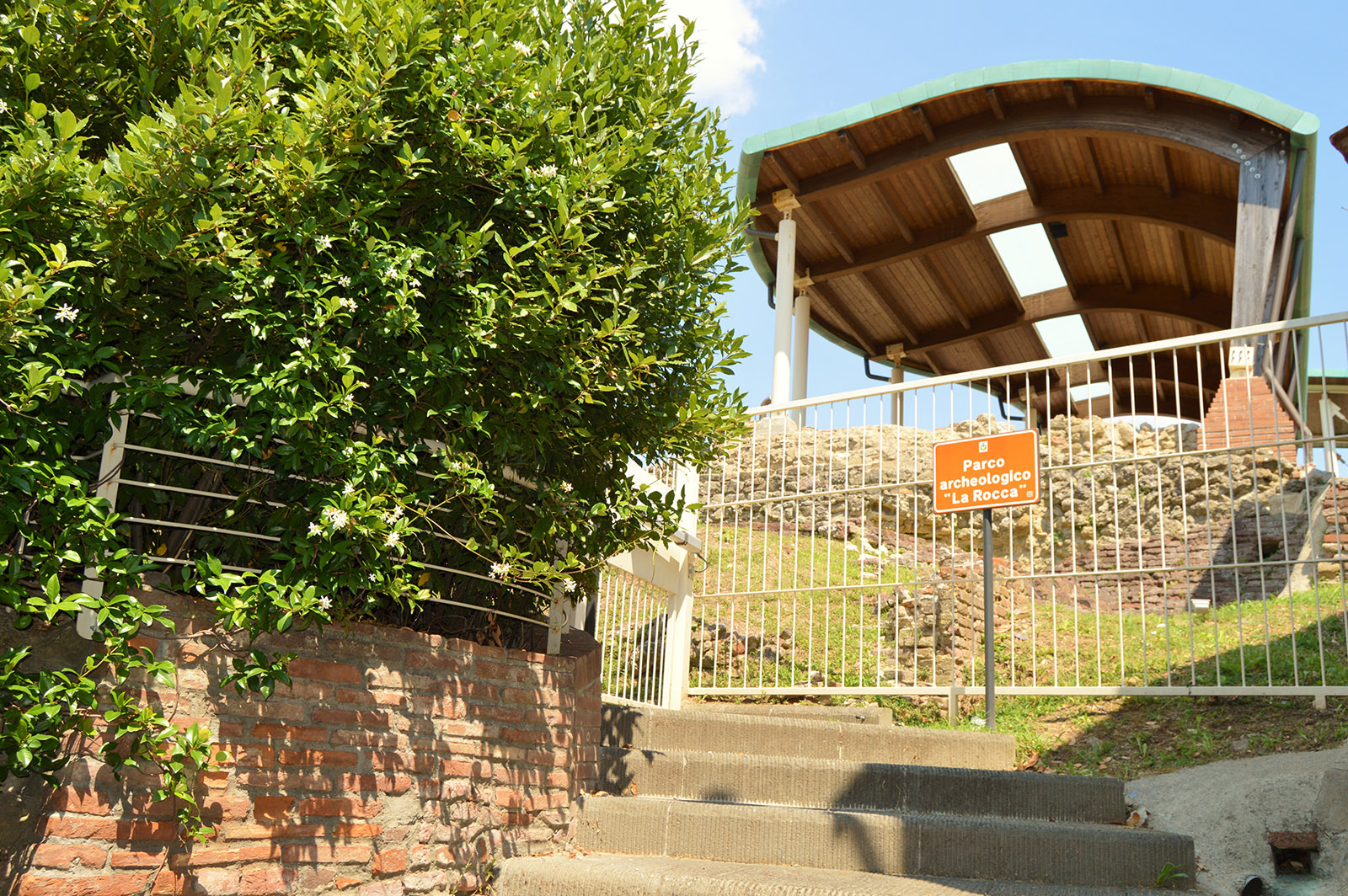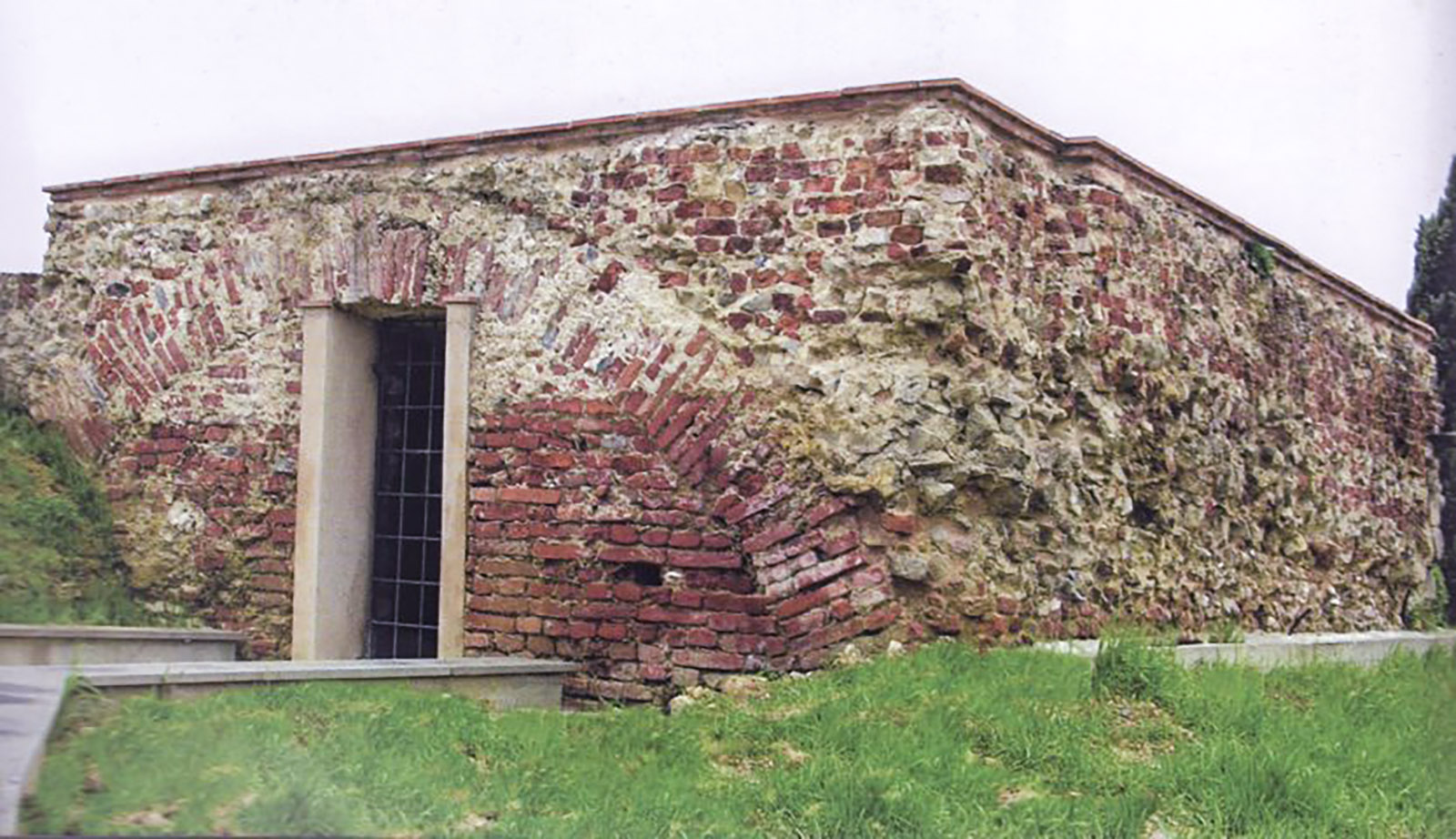
Unica struttura superstite della Rocca tardo medievale realizzata dai fiorentini una volta conquistato il castello nel 1327, è la cisterna quadrangolare realizzata nel corso del XIV secolo e visibile nella parte Nord dell’Area Archeologica. Realizzata in mattoni, alternati a bozzette di pietra calcarea di medie dimensioni, legati insieme da malta poco tenace di colore grigio chiaro, originariamente il manufatto era interrato e dotato di una volta in mattoni che costituiva il piano d’appoggio per gli edifici di pertinenza del ridotto, con funzione militare. In un momento successivo alla costruzione della cisterna quadrangolare si avvertì la necessità di dotare la struttura di un manufatto che convogliasse in essa le acque meteoriche provenienti presumibilmente dai tetti delle strutture adiacenti: visibile è infatti l’annesso pozzo di captazione dell’acqua, insieme ad un inghiottitoio per la raccolta delle acque piovane.

The most obvious hiatus in the history of construction of Rocca took place in 1327, when during the wider context of the heated conflict between the Guelphs and Ghibillines, Santa Maria a Monte, in the orbit of Guelph Lucca, fell at the hands of the Florentine army, who took control of and razed the parish church of Rocca to the ground and all its relevant structures with it. From 1335, in order to maintain control of the area, the Florentines proceeded to reconstruct the fort on the top of the hill and to restructure the existing defensive city walls. It is within this specific context of Florentine redesign of the castle area (including the original parish church) that the square medieval cistern comes in, dating from the Florentine reconstructions of the 14th century (planimetry). Mentioned in the Statute of 1391, the cistern, conceived of and designed with the purposes of storing drinking water, was an essential element for the military garrison that had to resist sometimes prolonged attacks by its enemies. Originally, the feature was supposed to be buried a few feet under ground, as can be inferred by the existence of the attaching adduction / water catchment well (1). This small structure, almost cylindrical in shape, was designed with mixed techniques, by placing a single row of building materials against the virgin rock, but in the part that it emerged from the soil it had to be much stronger (2, 3). A second medieval cistern is still visible today in the premises of the Public Library (4) and, taking advantage of the natural cavities of the tuff that makes up the internal stratigraphy of the rock, was used, as opposed to that of the Rock, for the needs of the entire population, thanks also to its location on Corso Carducci, the village’s main road.




